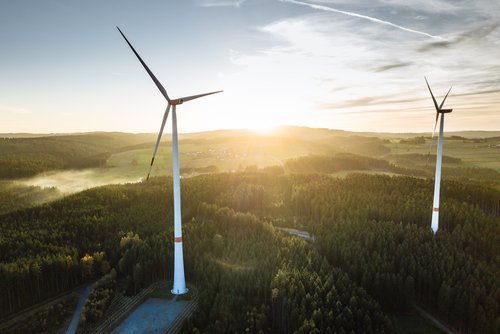Energy Estate has provided this response to Australian Rural & Regional News regarding issues raised in the statement issued by David Littleproud, Leader of the Nationals, Federal Member for Flynn, Colin Boyce and Federal Member for Capricornia, Michelle Landry on 15 May 2023
Issue: The project will involve extensive clearing of land
Energy Estate: The Moah Creek Wind Farm will require limited clearing of vegetation. The impact on the ecosystem has been minimised through the design stages of the project – we have halved the project area in consideration of the ecological value of the region. The design also includes corridors of connectivity which will remain uncleared.
The majority of the project area is presently used for cattle grazing across all extents. We have sought to prioritise the use of previously cleared areas, which account for 40 per cent of the project disturbance footprint. Outside of this, the majority of proposed native vegetation clearing is located in areas mapped as ‘least concern’ vegetation communities. Vegetation communities known as of concern and endangered represent 0.4per cent and 0.5 per cent of the Project footprint respectively.
CQP has a commitment to minimising ongoing impacts to the environment and will achieve this through the development of various construction management plans prepared by suitably qualified professionals. Some preliminary plans developed are Vegetation and Fauna Management Plan (VFMP), Rehabilitation Plan, Erosion and Sediment Control Plan (ESCP), Cleared Vegetation Plan (CVP), Bushfire Management Plan (BMP) amongst others.
Issue: Much of the land on which the project is located is untouched
Energy Estate: The land where the project will be located on is not untouched as it has been modified and utilised over many years for a range of farming and agricultural purposes.
Issue: We have no say on this project as there is no compulsory public consultation phase in wind farm development applications
Energy Estate: State Code 23 (that regulates wind farms) states “it is strongly encouraged that the applicant undertakes comprehensive consultation with the local community. The Clean Energy Council’s Community Engagement Guidelines for the Australian Wind Industry provides detailed guidance on conducting community engagement activities.”
We are committed to providing the opportunity for detailed public consultation and have undertaken open and comprehensive consultation with the Darumbal people, the community and a range of other stakeholders for more than 2 years. Our engagement aligns with the Clean Energy Council’s Community Engagement Guidelines for the Australian Wind Industry as well as a range of other industry guides. Our approach to consultation exceeds the recommendation in State Code 23.
Whilst it is true that as currently drafted the planning approval pathway with SARA for our project does not allow for public comment, we have and will continue to have information sessions and listen to the feedback we receive and respond to it. Additionally, there is a process for public comment under the EPBC Act (more below *)
First Nations and stakeholders have had and will continue to have multiple opportunities to have their say on this project including as follows:
- We have hosted 7 public drop-in information sessions in the last 2 years that will well publicised and well attended;
- We have published and distributed (by various means) 5 project newsletters that include information about how people can contact us;
- We have contact details on our project website that point residents to the various ways they can be in contact;
- We have held several face-to-face meetings with near neighbours and will continue to do so;
- *We have undertaken to notify all stakeholders and upload all details to our project website as soon as our EPBC referral has been lodged and we are informed of the dates for the Public Comment Period so as to make it as easy as possible for people to comment and to ensure they are aware of that opportunity to have their say on environmental aspects of our project.
Issue: (The project will create) soil erosion and is a risk to the Great Barrier Reef
Energy Estate: The Great Barrier Reef marine park and world heritage area are protected under the EPBC Act and the project will be subject to assessment under this Act. We have developed a Conceptual Erosion and Sediment Control Plan (ESCP) to manage soil erosion and deposition into waterways. A more detailed ESCP will be prepared prior to construction to ensure the environment, including waterways flowing to the Great Barrier Reef, is protected from sedimentation and dirty water. In addition, areas disturbed by project works will be rehabilitated or stabilised to ensure that the long-term water quality is not materially impacted by the project.
Issue: “Chopping down thousands of hectares of native bushland and pristine farmland is senseless.”
Energy Estate: We are not proposing to clear either thousands of hectares of native bushland or pristine farmland.
Issue: The renewable sector does not have to comply with any current regulations in Queensland including tree clearing guidelines, reef legislation or environmental protocols that have been imposed on every other industry
Energy Estate: This is untrue. Renewable projects must comply with a number of laws that regulate the environment, the clearing of vegetation and the impact on flora & fauna to include the Vegetation Management Act 1999 (Qld), the Planning Act 2016 (Qld), State Code 23: Wind farm development, State Code 16: Clearing native vegetation clearing and the Environment Protection and Biodiversity Conservation Act 1999 (Cth).
Australian Rural & Regional News welcomes any further response from the Honourable Members.
